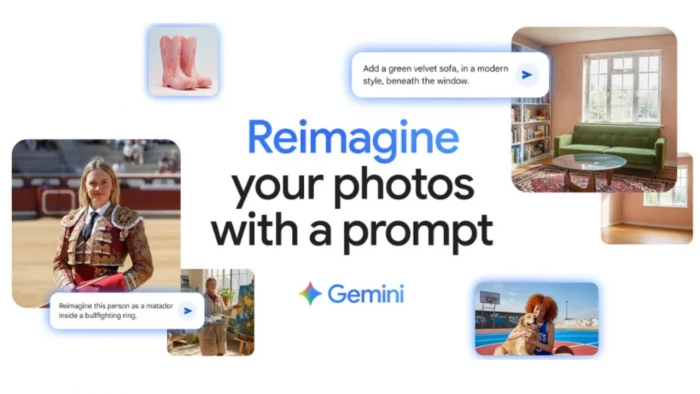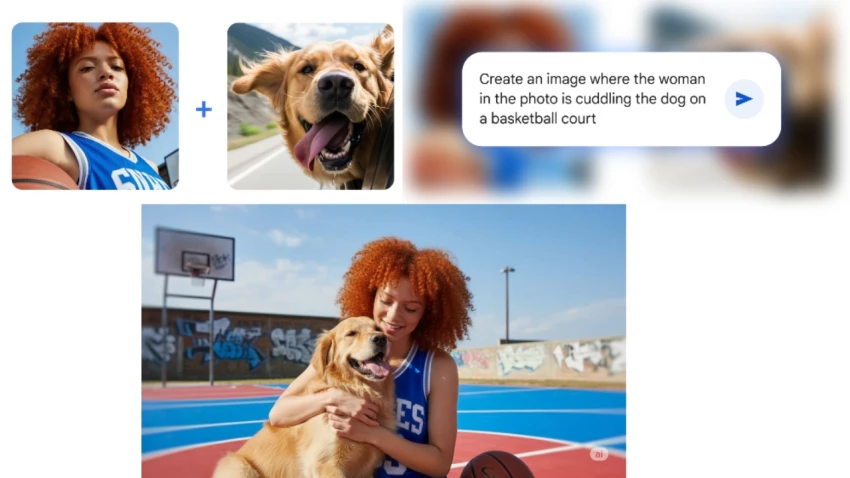

On August 26, 2025, Google introduced its latest AI-powered image editing model, known internally by the codename Nano Banana. While the name may sound lighthearted, the technology behind it represents one of Google’s most advanced steps in generative AI for consumer use. Officially released as the Gemini 2.5 Flash Image model, Nano Banana is available within the Gemini mobile app and through developer tools such as the Gemini API, Google AI Studio, and Vertex AI (Google Developers Blog).
The launch followed weeks of speculation after senior Google executives teased the project on social media with banana emojis. Once revealed, it quickly drew attention from both casual users and professional creators for its ability to deliver realistic, consistent edits across diverse images.
Nano Banana distinguishes itself by focusing on image fidelity and consistency, two areas where earlier AI editors often struggled. Among its standout features:
Google emphasized that all output from Nano Banana includes both visible watermarks and invisible SynthID markers, ensuring that images can be traced as AI-generated. This dual-tagging system aligns with broader industry moves toward transparency in synthetic media (Google Blog).

Nano Banana is accessible in two main contexts:
Pricing is competitive, starting at $0.039 per image under standard tiers, positioning it as an accessible option for startups and enterprises looking to add generative editing capabilities.
Before its official release, Nano Banana appeared on LMArena, a community benchmarking platform for large models. There, it ranked highly in image-editing evaluations, surprising observers with its quality.
On Reddit, creators expressed cautious optimism. One user noted:
“It’s not perfect, but it delivers around 65–70% of Photoshop-level quality for everyday tasks, which is impressive for something that runs on prompts rather than manual tools.”
Others highlighted its strength in portrait editing, where identity distortion has been a recurring issue with earlier AI systems. The reception indicates that while Nano Banana is unlikely to replace professional-grade software immediately, it could become a complementary tool for quick, high-quality edits.
The release of Nano Banana signals a strategic escalation in the competitive world of AI-driven design tools.
For decades, Adobe has dominated the photo editing market with tools like Photoshop and Lightroom. However, AI models such as Nano Banana challenge this dominance by offering simpler, natural-language editing. Instead of requiring manual adjustments, users can instruct the AI with phrases like “change the background to a sunset” or “remove the table.”
While Adobe has integrated generative AI into Photoshop through Adobe Firefly, Google’s advantage lies in distribution. By embedding Nano Banana directly into the Gemini app, it reaches millions of users instantly without requiring them to purchase or learn specialized software.
Platforms such as Canva, Runway, and Stability AI also compete in this space. Canva has democratized design for non-professionals, while Stability AI offers open-source models that can be fine-tuned. Nano Banana differs by combining consumer accessibility with enterprise-grade infrastructure, allowing it to scale across personal and professional use cases simultaneously.
Analysts argue that this dual focus may put pressure not only on Adobe but also on startups that rely on niche editing features.
The power of generative image models raises critical questions about ethics, misinformation, and consent. Nano Banana, despite its strengths, is no exception.
With its ability to create photorealistic composites, Nano Banana could be misused to fabricate events or manipulate personal images. Google’s implementation of watermarks and SynthID tagging is a safeguard, but the effectiveness of such measures depends on widespread adoption across platforms.
The feature that allows seamless preservation of personal likeness brings value to creative edits but also heightens the risk of non-consensual content creation. Deepfake misuse remains a broader societal concern, and tools like Nano Banana could make such content easier to produce.
Questions also remain about intellectual property. For example, if Nano Banana blends textures from one image into another, who holds the rights to the final result? Google has not provided detailed guidelines on ownership, leaving room for legal debates in the future.
Although Google has not disclosed every technical detail, the Gemini 2.5 Flash Image model builds on its earlier multimodal architecture. Industry observers believe it uses diffusion-based generative techniques combined with identity preservation algorithms that track facial features across edits.
By integrating multimodal reasoning, Nano Banana can interpret both text and images, enabling multi-image composition and context-aware edits. These innovations distinguish it from simpler prompt-to-image models.

Governments worldwide are beginning to regulate AI-generated media. The European Union’s AI Act and proposed U.S. legislation on synthetic content disclosure could directly impact tools like Nano Banana.
Google’s decision to watermark all outputs may help it comply with these emerging standards, but questions remain about cross-platform enforcement. If images edited in Gemini are shared on platforms that strip metadata, will the safeguards still hold?
The launch of Nano Banana highlights a broader trend: AI image editing is shifting from a specialist skill to a mainstream capability. Looking ahead, several developments seem likely:
Nano Banana represents a significant step in Google’s AI roadmap. Its combination of ease of use, photorealistic output, and integration into both consumer and developer platforms positions it as a competitive force in digital creativity.
However, alongside its promise comes serious ethical and regulatory questions. Issues of misinformation, consent, and ownership remain unresolved, and the technology’s broader societal impact will depend on how responsibly it is deployed and governed.
As the landscape evolves, Nano Banana is more than just another AI tool; it is a sign of how quickly AI-driven editing is reshaping the boundaries of creative work, media integrity, and digital trust.
Be the first to post comment!